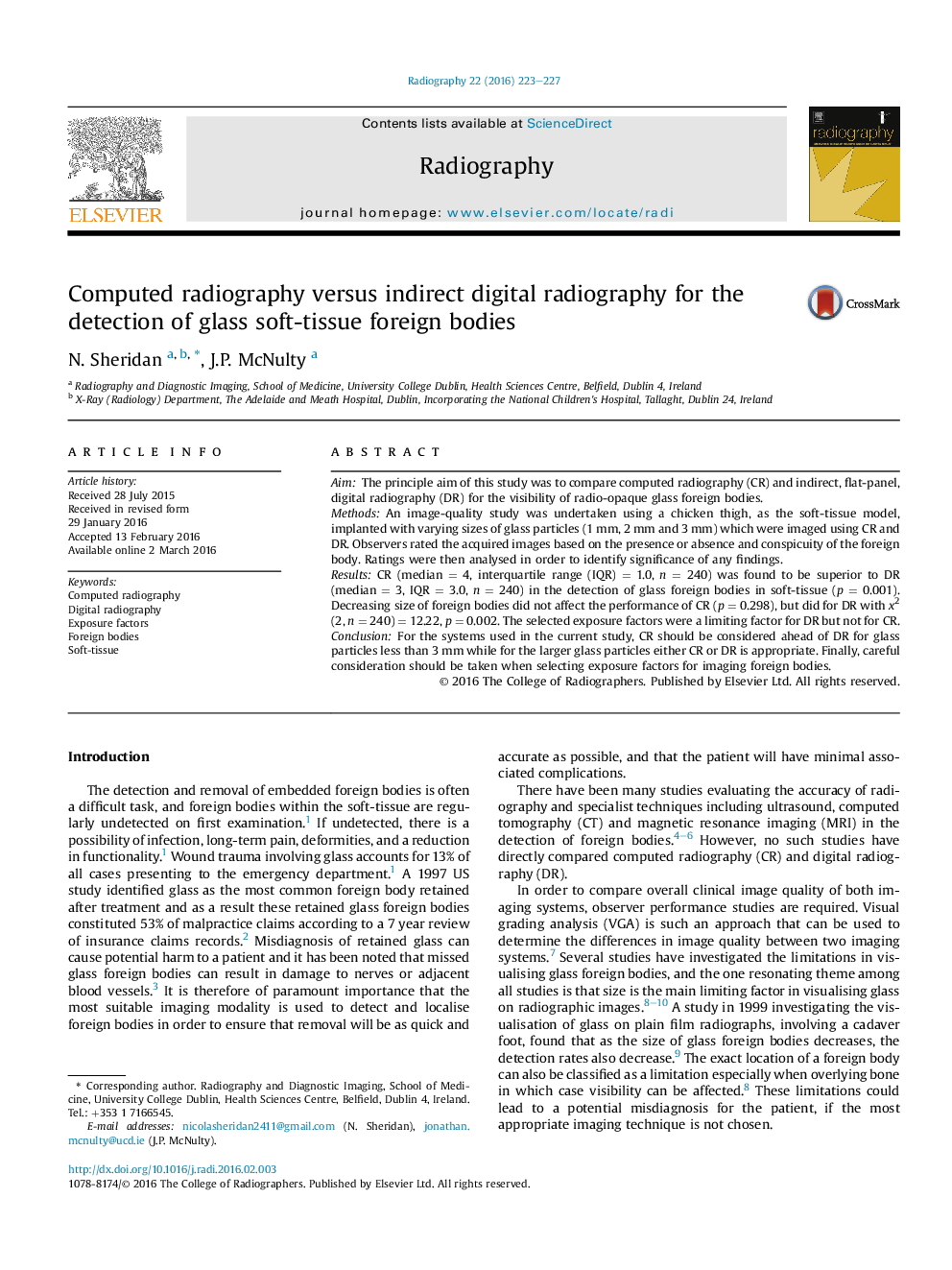| Article ID | Journal | Published Year | Pages | File Type |
|---|---|---|---|---|
| 2735660 | Radiography | 2016 | 5 Pages |
•Optimisation of image quality is an essential part of foreign body detection.•CR was found to be superior to indirect digital radiography for the detection of glass foreign bodies.•Exposure factor selection was found to be a limiting factor for indirect digital radiography.•For smaller sized glass foreign bodies CR should be used ahead of indirect digital radiography.
AimThe principle aim of this study was to compare computed radiography (CR) and indirect, flat-panel, digital radiography (DR) for the visibility of radio-opaque glass foreign bodies.MethodsAn image-quality study was undertaken using a chicken thigh, as the soft-tissue model, implanted with varying sizes of glass particles (1 mm, 2 mm and 3 mm) which were imaged using CR and DR. Observers rated the acquired images based on the presence or absence and conspicuity of the foreign body. Ratings were then analysed in order to identify significance of any findings.ResultsCR (median = 4, interquartile range (IQR) = 1.0, n = 240) was found to be superior to DR (median = 3, IQR = 3.0, n = 240) in the detection of glass foreign bodies in soft-tissue (p = 0.001). Decreasing size of foreign bodies did not affect the performance of CR (p = 0.298), but did for DR with x2 (2, n = 240) = 12.22, p = 0.002. The selected exposure factors were a limiting factor for DR but not for CR.ConclusionFor the systems used in the current study, CR should be considered ahead of DR for glass particles less than 3 mm while for the larger glass particles either CR or DR is appropriate. Finally, careful consideration should be taken when selecting exposure factors for imaging foreign bodies.
